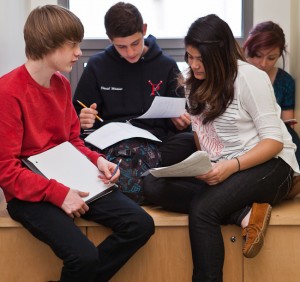By Matt Levinson
Schools are the perfect breeding ground for fostering students' questions, a place to spark students' interests and ideas for designing innovative solutions to real problems. Everyday, educators have opportunities to help kids develop the tools, skills and habits to come up with meaningful, lasting solutions to problems.
Take, for example, an incident that occurred in a first-grade teacher's classroom at Marin Country Day School in Northern California, which provided an opportunity to understand design thinking. Students were struck by the sound of a bird that crashed into the classroom window and died. After the teacher brought in a lower school science specialist to give an in-depth look at the qualities and characteristics of the bird, from sight to body structure, she challenged students to come up with designs to prevent another bird from crashing into the window. The teacher took her students through the design thinking process to figure out a way to save the birds.
For students to come up with authentic, functional designs, they had to have a deep understanding of birds. In scientific circles, the process goes like this, according to Teaching Institute of Excellence in STEM President Jan Morrison: "Designing is cognitive modeling in which a person gains insight into a problem, determines alternative pathways, and assesses the likelihood of success between solution sets."
So the first grade students had to first gain insight into the problem. This is where the lower school science specialist and her expertise with birds came into play. The specialist was able to help students better understand the features and habits of birds, so that students could then "determine alternative pathways" to help the birds survive and not crash into the classroom windows.
In addition, STEM classrooms need to be "equipped to support spontaneous questioning as well as planned investigation," which is exactly what happened in this first-grade class. Students developed and tested prototypes and came up with effective solutions, which centered on colorful designs to put in the window space. For the rest of the year, not a single bird crashed into the classroom window.


